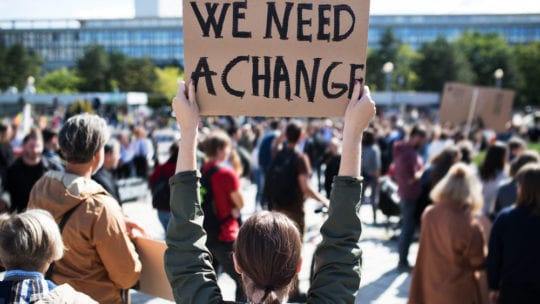
[Editor's Note: From time to time, PRNEWS presents thoughts from those breaking into the business. Thomas Gillespie is a 2020 graduate of Tufts University. He recently completed an internship at Momentum Communications Group.]
I am constantly reminded of the Greek myth of Sisyphus–cursed to eternally push a boulder up a hill, only to see his efforts dashed and the boulder roll back down. Keeping up with the media cycle has been a brisk challenge at the best of times and an overwhelming ordeal at the worst.
In the past few years, the amount of content from traditional and nontraditional sources has exploded. While this has expanded the public marketplace of ideas, it has contributed to an epidemic of misinformation. To maintain our grasp of the truth, we must examine, practice and teach news literacy.
The clearest determinant of Americans’ media habits is age. Younger Americans have been following the protests more frequently than older Americans, who prefer updates about the presidential election and the pandemic, a Pew Research Center study says. This reflects generational shifts in cultural attitudes, but it also highlights the differing ways younger and older people consume information.
Social Media's Divisions
Chief among these distinctions is social media. Younger generations are far more likely to turn to platforms like Twitter for news. The pitfalls of using social media for news have been explored extensively: bad-faith actors can weaponize it to spread incendiary rhetoric. This blurs the line between fact and opinion. During an historic pandemic, misinformation can turn deadly.
Since protests began in May, however, the importance of social media’s democratization of the media landscape is noticeable. On Twitter, we see images of police brutality circulate to hundreds of thousands of users. The mainstream outlets give these images less play than social. Activists have utilized social to communicate their stances freely.
PR Must Keep Up with Change
So, what does this mean for media professionals? We, too, must democratize strategies and catch up with the pace of our feeds. Lead time for messaging will shrink from days to hours and even minutes. Gone are the days when a statement will circulate for fourth and fifth opinions. The public will not tolerate silence. PR must be quicker and more comfortable taking a stance with messaging.
As the pandemic raged and protests broke out, communicators rapidly reassessed social media and pitching strategies. They pivoted story topics and reached out to journalists working from home. The traditional definition of professionalism is being challenged. As media professionals in an evolving news landscape, we must bridge the gap between established practices and newer forms of content creation.
This will indeed be a challenge, but more so, it is an opportunity. We have the chance to marry PR with our cultural consciousness. Since the pandemic and protests seized our attention, we have seen an overflowing of value declarations and solidarity pledges. Looking forward, we can build on this outpouring and become less subservient to the altar of impartiality.
Engaging content can never exist in a vacuum–it must respond to the culture and landscape that create it. In an age where politics, culture, entertainment and mass movements bleed into one another, media professionals must be quick, thorough and compassionate. Now is the time for PR to start the conversation, not react to it.
